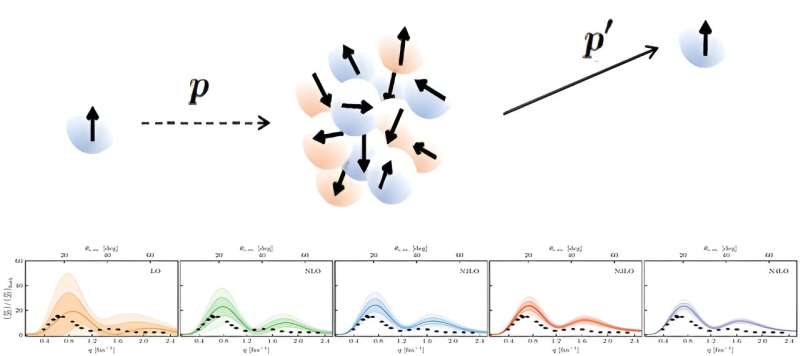This article has been reviewed according to Science X's editorial process and policies. Editors have highlighted the following attributes while ensuring the content's credibility:
fact-checked
peer-reviewed publication
trusted source
proofread
Ab initio methods help scientists make sense of complex particle collisions

When atomic nuclei and subatomic particles interact, the results are incredibly complex. These are the "many body problems" of quantum mechanics. To help make sense of these interactions, scientists create ways to simplify the range of possible outcomes.
One example is "effective interactions," which simplify the interactions between a nucleon (a proton or a neutron) and an atomic nucleus. Effective interactions help scientists develop theories of the reactions that result when nuclei collide with each other or with subatomic particles.
These tools are part of a group of methods called effective field theory (EFT). EFT in turn is a type of approach called "ab initio," or "first principles." Ab initio means a calculation starts with the established laws of physics without any other assumptions.
In the case of effective interactions, working ab initio means that physicists use consistent assumptions about the protons and neutrons in a nucleus to both describe a nucleus before it interacts with another particle, and to describe the protons and neutrons after they scatter from that nucleus.
In ab initio studies, scientists use EFTs to compute how nucleons interact and scatter. EFTs allow scientists to examine different energy levels for these interactions. They can also examine different levels of accuracy for the calculations. These calculations help scientists understand observations from experiments.
Now, scientists have performed the first nucleon-nucleus scattering calculations using nucleon-nucleon interactions with EFT. They used statistical analysis to examine how much uncertainty the calculations produce. This will help scientists interpret how well the EFT approach works for different nucleon-nucleon interactions. It will also help them interpret the findings of physics experiments.
This study, which has been published in Physical Review C, found that the diagnostic tools scientists use to study atomic nuclei with just a few neutrons and protons can also be used to study the scattering of protons and neutrons off atomic nuclei.
The theoretical model on which this study is based gives a good description of scattering of protons from carbon-12 and oxygen-16 at low energies, especially for scattering at more forward scattering angles.
Combining the successful description of nuclei with ab initio methods with approaches to nuclear reactions has been and still is a challenge in theoretical nuclear physics. Addressing this challenge is an important task in the era of the Facility for Rare Isotope Beams.
More information: R. B. Baker et al, Ab initio nucleon-nucleus elastic scattering with chiral effective field theory uncertainties, Physical Review C (2022). DOI: 10.1103/PhysRevC.106.064605
Journal information: Physical Review C
Provided by US Department of Energy





















